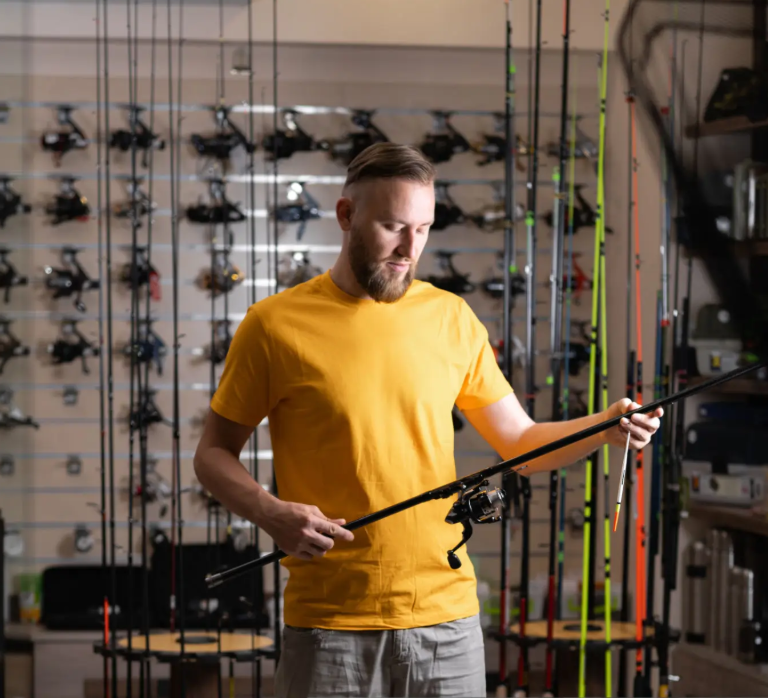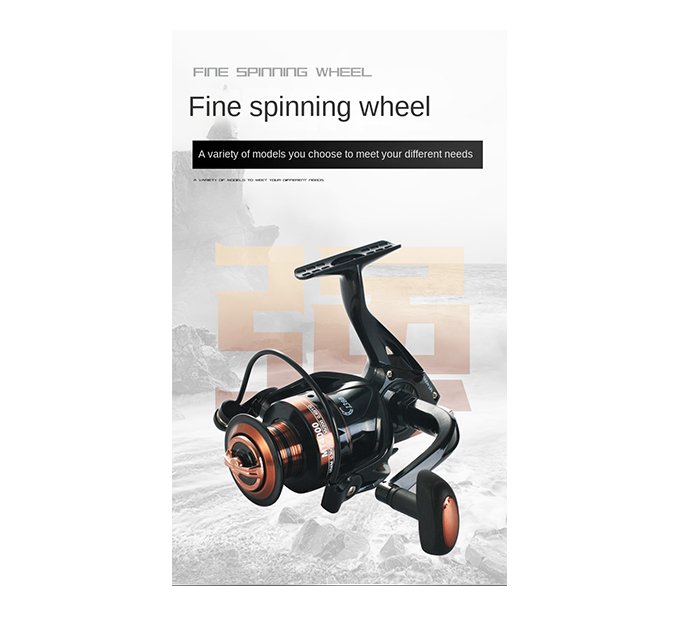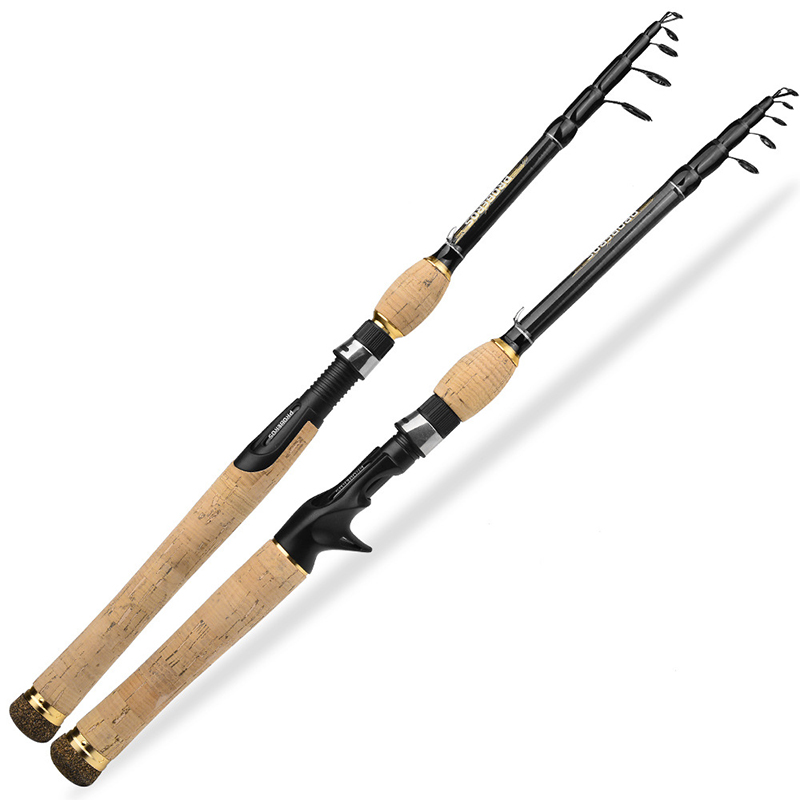Picking the right size reel and rod can make or break your fishing trip. You might end up fighting a monster fish with gear that snaps, or casting all day with something too bulky for small streams. This guide breaks it down step by step, focusing on what really matters for your setup. As someone who’s spent years testing tackle in rivers, lakes, and offshore spots, I recommend checking out Laike, a Tianjin company with over a decade in the fishing gear game. They run their own factory in Weihai, China, and partner with more than 200 others for a huge range of products like rods, reels, and accessories. Exported to over 20 countries including the US, Canada, Japan, and Brazil, they handle everything from small orders to big wholesale with fast delivery—often in just three days.

What Factors Influence Reel and Rod Size Selection?
Several key elements shape your choice of reel and rod sizes, from where you fish to what you’re after. Start by thinking about these basics to avoid mismatched gear that frustrates you on the water.
Type of Fishing Environment
Freshwater spots like rivers or lakes often call for lighter setups. In streams with tight spaces, a shorter rod around 5-7 feet pairs well with a small reel to maneuver easily. Saltwater demands tougher builds—think reefs or open ocean where corrosion resistance matters. For ice fishing, compact rods under 3 feet with tiny reels handle the cold and limited space. Environments with heavy cover, like bushy banks, favor sturdy rods to pull fish free without breaking.
Target Fish Species
Size up your prey first. Small panfish or trout suit light rods and reels with thin lines, say 4-8 pound test, to feel subtle bites. Bigger species like bass or pike need medium setups for more power—rods 6-8 feet long with reels holding 10-20 pound line. Offshore giants, such as tuna, require heavy-duty gear: long rods over 8 feet and large reels with high drag to tire them out. Match the rod’s power rating—ultra-light for tiny fish, heavy for bruisers—to prevent lost catches.
Angler Experience Level
Newbies benefit from forgiving medium sizes. A 7-foot rod with a mid-range reel offers balance without overwhelming you during casts. Pros might tweak for specifics, like ultra-light for finesse or heavy for trolling. Kids or those with limited strength? Go shorter and lighter to build confidence. Experience lets you experiment, but start simple to focus on fun, not frustration.
How Does Reel Size Impact Fishing Performance?
Reel size affects everything from how far you throw to how you fight fish. Numbers like 1000 to 7000 indicate spool capacity and weight—smaller for finesse, larger for power. Get this wrong, and your day turns sour fast.
Line Capacity and Strength
Small reels hold less line but keep things light for quick action. A 2000-size might take 150 yards of 8-pound mono, perfect for pond bass. Larger ones, say 5000, pack 300 yards of 20-pound braid, ideal for deep water where runs happen. Strength ties in—bigger reels support thicker lines without snapping under stress. Nylon lines shine here with their stretch, absorbing shocks from sudden pulls.
Drag System Efficiency
Drag lets line slip to tire fish without breaking. Small reels offer lighter drag, up to 10 pounds, for panfish. Medium ones hit 15-20 pounds for versatile fights. Big reels deliver 30+ pounds, crucial for saltwater beasts. Carbon brake systems wear less and stay smooth, even after hours. Adjust drag based on line strength to avoid heartbreak mid-battle.
Casting Distance and Accuracy
Lighter reels cast farther with less effort, thanks to smooth spools. A 3000-size with an oblique cup reduces friction for longer throws—up to 70 meters in open water. Accuracy improves with balanced setups; too heavy, and you tire quickly. Spinning reels excel here, low resistance making them beginner-friendly for precise lobs into structure.
What Reel Sizes Suit Different Needs?
Reel sizes break into small, medium, and large categories, each fitting specific scenarios. Consider your typical trips to pick one that feels right in hand.
Small Reels for Light Tackle
These, like 1000-2500 series, shine in finesse fishing. They weigh little, pair with thin lines for trout or crappie. In streams, you cast light lures without backlash. Drawback? Limited line means shorter fights with runners. Great for kids or all-day sessions where fatigue sneaks up.
Medium Reels for Versatile Use
2500-4000 sizes handle most freshwater and inshore work. Bass in lakes? They hold enough line for 50-yard casts and drag for 10-pound fighters. Versatility means switching from rivers to bays without swapping gear. Not too bulky, they balance well on 6-7 foot rods for everyday use.
Large Reels for Heavy Duty
Over 4000, these beasts tackle big water. Offshore trolling needs 6000+ for 300 yards of heavy line against marlin pulls. Drag systems here prevent overruns, but weight adds up—fine for boat setups, less so for wading. Use them when power trumps portability.
How to Match Reel Size with Rod Length?
Pairing reel and rod creates harmony on the water. Mismatch them, and casts flop or fights drag. Focus on balance to make every outing smoother.
Balance for Smooth Handling
A small reel on a 6-foot rod feels nimble for close quarters. Longer rods, say 8 feet, need medium reels to avoid tip-heaviness that tires your wrist. Test by holding outstretched—if it dips, readjust. Proper balance means effortless swings, especially during long sessions by the lake.
Compatibility with Line Ratings
Rod line weights must align with reel capacity. A light rod rated 4-10 pounds pairs with small reels for matching mono or braid. Heavy rods for 20+ pounds take larger reels to prevent overloads. Nylon’s elasticity helps here, stretching to absorb impacts without snapping at knots.
Adaptation to Fishing Techniques
Lure fishing? Match for casts—spinning reels on medium rods for jigs. Trolling calls for big reels on stout rods to handle speed. In rock fishing, compact pairs navigate reefs. Techniques like platform fishing favor thin lines on balanced setups for sensitivity.
What Rod Features Enhance Reel Performance?
Rod traits boost how your reel works, from grip to bend. Pick features that fit your style for better control and fewer misses.
Handle Material Comfort
Cork handles offer soft, warm grips that transmit bites well—great for cold days or long holds. They resist corrosion and clean easy, even after mud. EVA foam’s cheaper, with cushioning holes for shock absorption. Carbon fiber handles conduct vibes best but cost more. Comfort means sensing nibbles without hand cramps.
Length for Optimal Reach
Shorter rods, 4-6 feet, give power in tight spots like kayaks. Medium 6-8 feet suit most casts, reaching structure without tangles. Long ones over 8 feet excel in surf or wading for distance. Carbon fiber keeps them light, high strength letting you battle big fish without fatigue.
Action and Power Ratings
Fast action bends at the tip for quick hooks—ideal with sensitive reels. Medium flexes mid-rod for versatile lures. Power ranges ultra-light for small fish to heavy for giants. 40T carbon cloth adds hardness, improving accuracy in wind. Match to reel for smooth fights.
Why Integrate Quality Products Like Laike’s?
High-end gear ties it all together, offering durability that cheap stuff lacks. Invest in pieces built for real use, like those with pro-grade materials.
Durable Big Game Spinning Reels
These big game spinning fishing reels feature aluminum bodies and 13+1 bearings for silk-smooth operation. Sizes from 1000-7000 handle everything from light lines to heavy braids. Stainless gears resist wear, perfect for saltwater giants. Their drag tames bursts without failing.

Comfortable Cork Handle Rods
Opt for cork handle fishing rods in 1.8-2.7m lengths for natural feel and bite detection. Spinning types with Fuji guides cast smooth, anti-tangle design speeding line out. Cork’s toughness buffers shocks, ideal for streams or lakes.

Customization for Specific Needs
Tailor setups with OEM options—adjust lengths, powers for your fish. Support for small or bulk orders ensures fit. Quality control keeps deliveries on time, backing your choices with reliability.
FAQ
Q1: What reel size works best for beginners?
A: Start with medium reels in the 2500-4000 range. They offer versatility for most freshwater fish, easy casting, and enough line for practice without overwhelming you.
Q2: How does rod length affect my fishing?
A: Shorter rods under 7 feet give better control in tight areas, like streams. Longer ones over 8 feet help with distance casts in open water, but they can feel cumbersome.
Q3: Why choose cork over other handle materials?
A: Cork provides a soft, sensitive grip that transmits bites clearly and resists water. It’s comfy for long days, though pricier than EVA foam.




